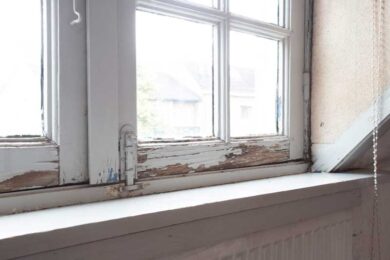Comprehensive Overview on Effective Lead Infraction Removal Strategies
In the world of ecological safety, resolving lead infractions demands a meticulous and structured strategy. This thorough overview begins by highlighting the essential preliminary actions of identifying lead hazards via innovative assessment and screening techniques. Methods such as XRF analysis and dirt clean tasting are vital in identifying contamination sources. In addition, the guide clarifies on the significance of sticking to rigid safety and security procedures throughout the elimination process, including making use of correct PPE and separating impacted locations (Lead Paint Removal Company). The subsequent areas assure to review post-removal confirmation and preventative techniques, making certain long-term security and conformity. Discover the intricate details that make these techniques not just reliable but important.
Recognizing Lead Dangers
Identifying lead hazards is an important very first step in minimizing the risks connected with lead exposure. Lead, a hazardous metal, can be present in various environmental tools, including paint, dirt, water, and dirt. It postures extreme wellness threats, especially to kids and pregnant females, resulting in neurological damages and developmental delays. As a result, specific identification of possible lead resources is crucial for effective removal.
The initial phase in identifying lead dangers involves comprehending common lead sources within the developed atmosphere. Frameworks constructed before 1978 are especially prone as a result of the common use of lead-based paint throughout that duration. Furthermore, dirt contamination can take place from degrading exterior paint, industrial emissions, or historic use leaded fuel.
An additional significant source is lead piping and plumbing components, which can leach lead right into drinking water. Durable goods such as playthings, ceramics, and imported items might likewise contain dangerous lead degrees. Especially, occupational atmospheres and pastimes involving lead can track contaminants right into homes.
Evaluation and Screening
When dealing with lead hazards, effective evaluation and testing are extremely important. Preliminary assessment typically entails an aesthetic examination to determine prospective lead sources, such as wearing away paint or polluted dirt.

Dust wipe tasting is another critical technique, especially in household settings. By gathering samples from floorings, windowsills, and other surface areas, this technique provides insights into prospective direct exposure risks. In addition, dirt screening around structure boundaries is vital to identify lead contamination that might posture dangers, especially to kids.
Safe Removal Procedures
Upon completing detailed assessment and testing, executing safe elimination procedures is the next crucial phase in resolving lead threats. This process guarantees that lead-contaminated products are efficiently and securely eradicated, minimizing threat to both employees and residents. The very first step includes isolating the affected location using plastic bed linen and proper securing strategies to avoid the spread of lead dust.
Employees should wear suitable personal safety equipment (PPE), consisting of respirators, handwear covers, and disposable coveralls, to mitigate exposure. Utilizing specialized devices and damp methods, such as damp sanding or utilizing HEPA-filtered vacuum cleaners, reduces the diffusion of lead particles. It is critical to stay clear of dry sanding or abrasive blowing up, as these techniques can produce dangerous lead dust.
Waste disposal is one more vital component; all polluted products have to be firmly bagged and classified according to EPA and local guidelines. Furthermore, detailed cleaning of the workplace with HEPA vacuums and damp wiping ensures the removal of recurring lead fragments.
Post-Removal Verification

Verification of effective lead removal, understood as post-removal verification, is vital to make certain the security and habitability of the remediated area. This process involves a series of meticulous assessments and tests made to find any residual lead particles that may present wellness threats. The first step typically consists of an aesthetic inspection to examine the conclusion and top quality of the remediation job. This inspection guarantees that all known sources of lead have actually been addressed and that no noticeable indications of contamination stay.
Complying with the visual evaluation, environmental sampling is conducted. This entails gathering dust, soil, and often water samples from the remediated area. Accredited labs analyze these samples to measure lead levels, guaranteeing they fall below the safety and security thresholds developed by regulative bodies such as the Epa (EPA)
On top of that, air quality testing may be carried out to discover airborne lead fragments, especially in cases where extensive lead-based paint elimination or renovation has occurred. The results of these tests provide quantitative information confirming that the lead degrees are within permitted limitations.
Ultimately, post-removal verification functions as a critical checkpoint, verifying the effectiveness of the lead reduction initiatives and safeguarding the health of residents and visitors.
Preventive Steps and Upkeep

A crucial preventative action includes making use of lead-safe accredited service providers for any renovation, repair service, or paint tasks. These specialists are learnt recommended you read techniques that decrease lead dust and debris. Additionally, keeping painted surfaces to avoid breaking or peeling is necessary, as degrading paint can launch lead bits into the atmosphere.
Educational initiatives targeting building owners and lessees relating to the threats of lead and the importance of reporting any type of potential threats can additionally enhance preventative initiatives. Regular cleansing utilizing HEPA vacuums and damp wiping methods can significantly lower lead dirt buildup.
Conclusion
In summary, efficient lead offense removal requires a precise technique including complete analysis, exact testing, and stringent removal procedures. Making sure security through correct isolation and individual protective tools stays critical. Post-removal confirmation by means of ecological sampling and air quality testing substantiates conformity with established safety standards. Ongoing assessments and maintenance are important to mitigate future lead threats, consequently protecting public wellness and look at these guys making sure continual compliance with regulative demands.